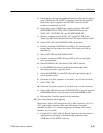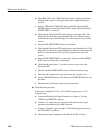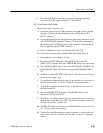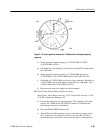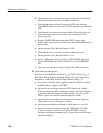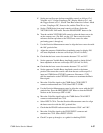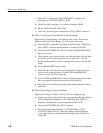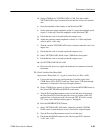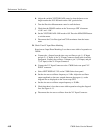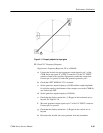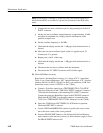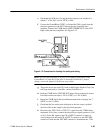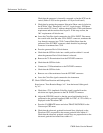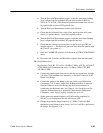
Performance Verification
4–58
1780R-Series Service Manual
v. Move the Color Bar signal to the CH B3 INPUT connector and
terminate into 75 W. Select INPUT–CH B3.
w. Check Use parts p. through s. as a guide for checking CH B3.
x. Set the VECTOR GAIN–VAR to Off.
y. Leave the Color Bar signal connected to the CH A INPUT connector.
51. Check Vector Display Clamp Stability and Position Range
Requirement: Clamp Stability: 1/64-inch (0.4 mm) or less. Vertical and
Horizontal Position Control Range: 1/4-inch (6 mm) from center.
a. Check that 75%-Amplitude Color Bars are applied to the 1780R-Series
CH A INPUT connector and Black Burst is applied to EXT REF.
b. Check that LEFT DISPLAY–VECT is selected and the PHASE SHIFT
button is set to On.
c. Check that the vector center dot does not shift more than 1/64-inch from
its original position as the burst vector(s) is rotated 360_. (Use the
Precision Measurement control to rotate the burst vector(s) the full 360_
range.)
d. Set the PHASE SHIFT button to Off.
e. Check that the vector center dot can be positioned 1/4-inch (6 mm) or
more from its centered position. Use the VERT and HORIZ POS
controls to move the vector center dot.
f. Use the VERT and HORIZ POS controls to reposition the vector center
dot to its original centered position on the vector graticule.
g. Disconnect the Color Bar signal and feed-through termination from the
instrument.
52. Check Vector Display Variable Gain Range
Requirement: Range: +14 dB to –6 dB of 75% color bar preset gain.
a. Connect the output of the leveled sine wave generator, through a 50 W to
75 W minimum loss attenuator, to the 1780R-Series CH A INPUT
connector. Terminate this loop-through connector into 75 W.
b. Check that LEFT DISPLAY–VECT is selected.
c. Set the generator output frequency to 3.579645 MHz for NTSC
(4.43361875 MHz for PAL). Adjust the generator output amplitude
control until the circle coincides with the compass rose on the Vector-
scope CRT.




